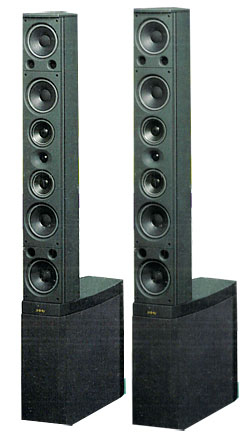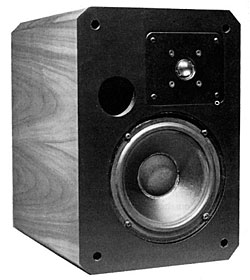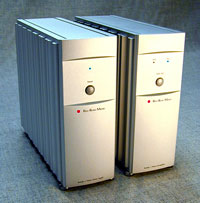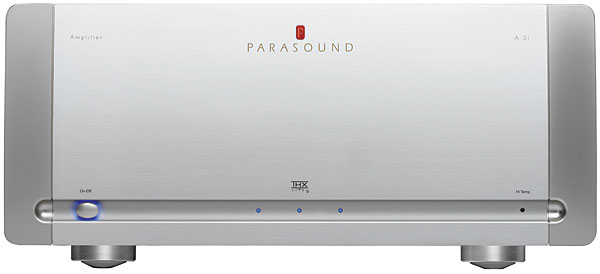Infinity Composition Prelude P-FR loudspeaker
 I can't think of two products at further ends of the audio spectrum than a single-ended triode tubed amplifier and a mass-market Home Theater loudspeaker. Single-ended tubed amplifiers are about reproducing subtlety, delicacy, nuance, and communicating the music's inner essence. Conversely, a Home Theater loudspeaker systemparticularly one made by a mass-market manufacturerwould appear to put the emphasis on booming bass and reproducing shotgun blasts, with little regard for musical refinement.
I can't think of two products at further ends of the audio spectrum than a single-ended triode tubed amplifier and a mass-market Home Theater loudspeaker. Single-ended tubed amplifiers are about reproducing subtlety, delicacy, nuance, and communicating the music's inner essence. Conversely, a Home Theater loudspeaker systemparticularly one made by a mass-market manufacturerwould appear to put the emphasis on booming bass and reproducing shotgun blasts, with little regard for musical refinement.
What a bizarre marriage it was, then, to pair the new Infinity Composition Prelude P-FR loudspeakers with the Cary Audio Design CAD-300SEI 11W single-ended triode amplifier (reviewed elsewhere in this issue). This combination didn't happen by accident; as you'll see, these apparently disparate products are a match made in heaven.
I discovered the Infinity Preludes while surveying Home Theater loudspeaker systems for the upcoming second issue of the Stereophile Guide to Home Theater. In addition to evaluating the loudspeaker systems under review with video soundtracks, I assessed their musical qualitiesor lack thereof. The Preludes were such a musical standout that I rescued them from the Home Theater room (where they had been powered by mass-market receivers and fed with a laserdisc source) and gave them a new lease on life in the larger music room, with reference-quality source and amplification components. The Preludes' extraordinary musical performance and unique design compelled me to tell you about how they performed in an audiophile-quality two-channel playback system.




 While it is not quite accurate to say that $500/pair loudspeakers are a dime a dozen, they are by no means unusual. And since this is a price area where major design compromises are mandatory (footnote 1), the sound of such loudspeakers tends to vary all over the map, from pretty good to godawfuldepending on what performance areas the designer chose to compromise and by how much.
While it is not quite accurate to say that $500/pair loudspeakers are a dime a dozen, they are by no means unusual. And since this is a price area where major design compromises are mandatory (footnote 1), the sound of such loudspeakers tends to vary all over the map, from pretty good to godawfuldepending on what performance areas the designer chose to compromise and by how much.
 Mark Levinson, born December 11, 1946, celebrates an important anniversary in 2002. Exactly 30 years ago he jogged onto the playing field of high-end audio, so early in the game that fans, then few and far between, could count the players on their fingers.
Mark Levinson, born December 11, 1946, celebrates an important anniversary in 2002. Exactly 30 years ago he jogged onto the playing field of high-end audio, so early in the game that fans, then few and far between, could count the players on their fingers.


 I was so impressed by the
I was so impressed by the  Jonathan Scull: How long have you been making cables, Ulrik?
Jonathan Scull: How long have you been making cables, Ulrik?